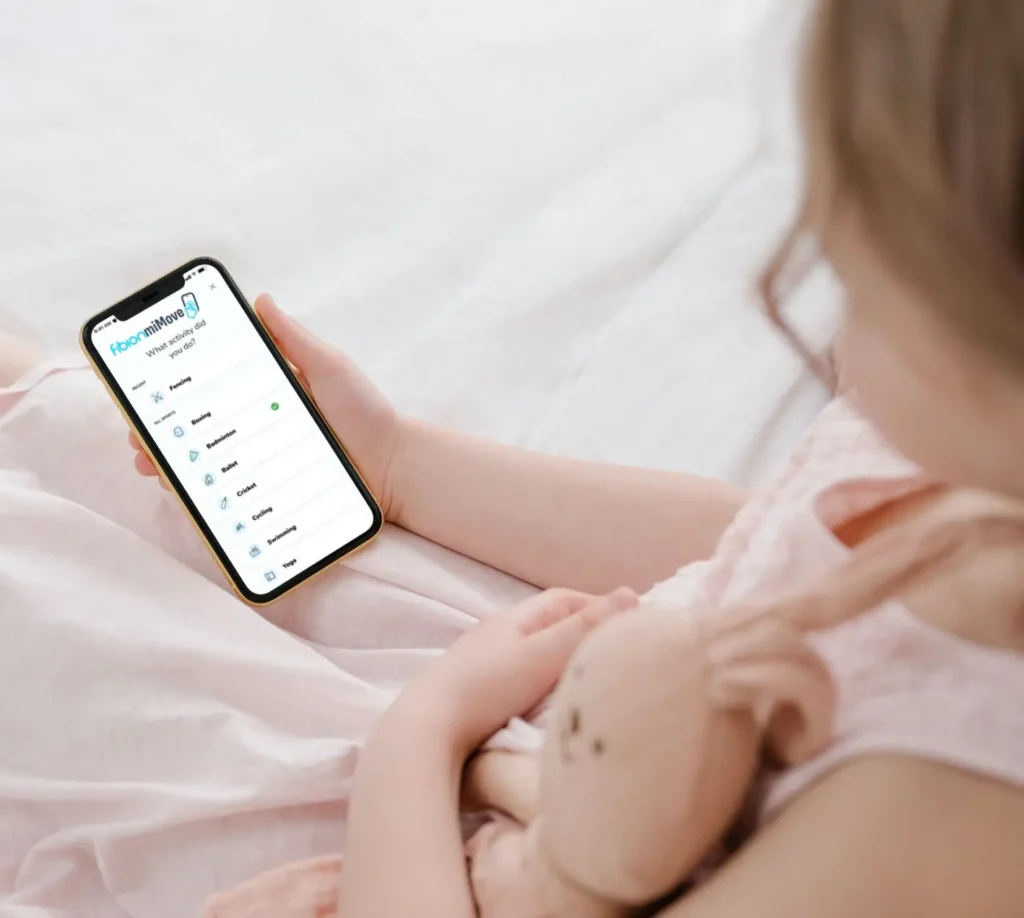Introduction
The importance of understanding sedentary behaviour and physical activity in the lives of children and adolescents cannot be overstated. These behaviors play a pivotal role in shaping their overall health and well-being. Accurate and reliable measurements of physical activity and sedentary behaviour are vital for researchers and clinicians to assess health outcomes, design effective interventions, and monitor progress.
The benefits of physical activity are undeniable. Physical activity contributes significantly to improved cardiovascular health, stronger bones and muscles, and enhanced mental well-being among young people. On the other hand, high levels of sedentary time are linked to an increased risk of obesity, type 2 diabetes, and other negative health outcomes. Research shows that when children enter primary school, there is a decrease in high intensity physical activity and increase in high levels of sedentary behaviour. As a result, the need for user-friendly measurements of both physical activity and sedentary behavior in children and adolescents has become a critical area of interest in public health research and practice.
The measurement of physical activity and sedentary behavior in young populations presents unique challenges due to their varied levels of cognitive and physical development. Researchers and clinicians must employ a range of methods and tools to capture an accurate picture of these behaviors in different settings, such as schools, homes, and recreational environments. Moreover, they must consider cultural, socioeconomic, and demographic factors that influence children’s and adolescents’ activity patterns.

A variety of objective and subjective methods are available for measuring physical activity and sedentary behavior, each with its advantages and drawbacks. Objective methods, such as accelerometers, provide more accurate and reliable data but may be more expensive and challenging to implement. Subjective methods, including questionnaires and activity logs, offer a cost-effective alternative but are prone to recall bias and other inaccuracies. Furthermore, younger children do not have the reading and writing skills to be able to answer questionnaires.
To help researchers and clinicians navigate the complexities of measuring physical activity and sedentary behavior in children and adolescents, this article will explore various measurement methods, tools, and technologies. We will also discuss the challenges and future directions in the field of measurement, with the goal of enabling professionals to make informed decisions about the most suitable approach for their specific needs.
Please explore our other resources for more in-depth information on measuring physical activity and sedentary behavior in different populations and settings:
- Children and Adolescents: Activity and Sedentary Measurements
- Clinical Setting: Activity and Sedentary Measurements
- Choosing the Right Measurement Method for Research and Clinical Applications
- Emerging Technologies for Activity and Sedentary Measurement
Methods for measuring physical activity and sedentary behavior for children and adolescents aged 5–17 years
Methods for Measuring Physical Activity
Measuring physical activity among children and adolescents is crucial for understanding their health and well-being. There are two primary categories of measurement methods: objective methods and subjective methods. Each has its own advantages and disadvantages, depending on the research or clinical context.
Objective Methods
Objective methods provide accurate and reliable data on measures of physical activity levels by employing devices that directly measure movement. Some common objective methods include:
- Accelerometers: These devices measure acceleration forces and are widely used objectively measured physical activity methods. They can capture various intensities of movement, from light to moderate-to-vigorous physical activity (MVPA), and provide data on the duration and frequency of activities. Accelerometers are considered the gold standard for measuring physical activity in research settings.
- Pedometers: Pedometers count steps and provide a simple, cost-effective method for assessing physical activity. However, they do not capture activity intensity or type, limiting their utility in some research contexts.
- Heart rate monitors: These devices measure heart rate and can provide insights into the intensity of physical activity per day. However, heart rate can be influenced by factors other than physical activity, such as stress or illness, leading to potential inaccuracies.

Subjective Methods
Subjective methods rely on self-report or proxy-report to gather information about physical activity levels. Some common subjective methods include:
- Questionnaires: These instruments collect self-reported or proxy-reported data on physical activity levels, types, and duration. They can be tailored to specific populations, such as school children. Questionnaires are cost-effective and easy to administer but can be prone to recall bias and social desirability bias.
- Activity logs/diaries: Participants record their physical activities in a log or diary, providing information on the type, duration, and intensity of activities. Like questionnaires, activity logs are subject to recall and social desirability biases, and their accuracy may be influenced by the participant’s ability to accurately recall and report activities.
- Direct observation: Trained observers watch and record children’s and adolescents’ physical activity behaviors. This method can provide detailed information on the context and quality of physical activities but can be time-consuming and require extensive training for observers.


In conclusion, choosing the most suitable method for measuring physical activity in children and adolescents depends on the research or clinical context, budget, and desired level of accuracy. Adherence to the World Health Organization’s physical activity guidelines can help researchers and clinicians assess whether children and adolescents are meeting the recommended levels of activity and inform interventions aimed at reducing sedentary behaviors.
Sedentary Behavior Measurements: Techniques and Tools
- Objective Measures
- Subjective Measures
Based on the sedentary behavior research network, the time of sitting as a risk factor for health in children and adolescents is a growing concern in today’s society. Accurate measurement of sedentary behavior is crucial to understanding its impact on physical activity and health. This chapter delves into various techniques and tools used to measure sedentary behavior, discussing both objective and subjective measures.
Objective Measures
Objective measures involve using devices to collect data on sedentary behavior. These methods provide accurate and reliable information, minimizing the potential for recall and reporting biases. Some of the popular objective measurement tools are:
- Accelerometers: Accelerometers are widely used to measure sedentary behavior in children and adolescents. They are small, lightweight devices typically worn on the waist, wrist, or ankle that record acceleration data. These devices can distinguish between different intensities of physical activity and sedentary time. Read more about accelerometers here.
- Inclinometers: Inclinometers measure the angle of inclination or posture of a person. These devices can detect sitting, standing, and lying postures, providing a more precise assessment of sedentary behavior.
- Heart Rate Monitors: Heart rate monitors are less common in sedentary behavior research but can provide valuable information on energy expenditure during sedentary activities.
Subjective Measures
Subjective measures rely on self-reporting or proxy reporting by parents, teachers, or caregivers. Though less accurate than objective measures, they can offer valuable contextual information about sedentary behaviors. Some subjective measurement tools include:
- Questionnaires: Self-report or proxy-report questionnaires are popular tools for assessing sedentary behavior. They can provide valuable insights into the types, duration, and context of sedentary activities. The Sedentary Behavior Questionnaire (SBQ) is an example of a well-established questionnaire.
- Activity Diaries: Activity diaries involve recording sedentary behaviors throughout the day. Participants, parents, or teachers note the time, type, and duration of sedentary activities. While diaries can provide detailed information, they are prone to recall bias and can be time-consuming to complete and analyze.
- Interviews: Structured or semi-structured interviews can help gather information about sedentary behaviors, preferences, and contexts. Interviews can be conducted in person or over the phone and may involve children, parents, or teachers.
It is essential to select the appropriate measurement tool based on the research or clinical setting. Often, a combination of objective and subjective methods is employed to provide a comprehensive understanding of sedentary behavior among children and adolescents. For more information on choosing the right measurement method, visit this article. By accurately assessing sedentary behavior, researchers and clinicians can develop targeted interventions and promote adherence to guidelines on physical activity and sedentary behaviour for children and adolescents set by the World Health Organization and other public health agencies.
Selecting the Right Measurement Method
Selecting the right measurement method for physical activity and sedentary time in research and clinical settings is crucial to ensure accurate data collection and interpretation. This choice may vary depending on factors such as the population being studied, the setting, and the intended use of the data. Here, we will discuss how to choose the appropriate method for assessing physical activity and sedentary behavior.
Considerations for Selection
When selecting a measurement method, consider the following factors:
- Validity and reliability: The chosen method should provide accurate and consistent results. Objective methods such as accelerometers offer higher validity and reliability compared to subjective methods like questionnaires.
- Feasibility: Consider the practicality of implementing the chosen method in terms of time, cost, and participant burden. For example, while accelerometers may be more accurate, they may not be feasible for large-scale studies due to their cost and the need for participant compliance.
- Population: The chosen method should be suitable for the specific population being studied. Some methods may be more appropriate for certain age groups or populations with specific health conditions. For instance, among adolescents, accelerometers may be preferable due to the potential for recall bias in self-reported methods.
- Context: The method should be appropriate for the setting in which it will be used, whether it is a research study, a clinical setting, or an occupational environment. For example, in a clinical setting, the focus may be on health indicators in school-aged children, while in an occupational setting, the focus may be on the relationship between physical activity and job performance. For example, when interested in understanding the context of physical activity throughout the day, questionnaires allow to collect information on the types of physical activity or, for example, assessment of multiple behaviour such as nutrition and physical activity.

Comparing Methods
To help guide your selection, the following table compares objective and subjective methods for measuring physical activity and sedentary behavior:

Ultimately, the choice of the right measurement method depends on the specific goals and constraints of the study or clinical setting. By considering factors such as validity, reliability, feasibility, population, and context, researchers and clinicians can select the most appropriate method for their needs.
For more detailed information about various methods for assessing physical activity and sedentary behavior, visit our articles on accelerometer-measuring-physical-activity-sedentary-behavior and methods-tools-sedentary-behavior-activity-measurement.
Challenges and Future Directions
Measuring physical activity and sedentary behavior presents various challenges and opportunities for advancement. This section will discuss key challenges faced by researchers and clinicians in this field, as well as explore future directions that could lead to improved measurement methods and a better understanding of the relationship between insufficient physical activity, sedentary behavior, and health.
Key Challenges
- Validity and reliability: Ensuring the validity and reliability of measurement methods is crucial for obtaining accurate and consistent data. This is particularly challenging when dealing with self-reported methods, which are prone to recall bias and social desirability bias, especially among school-aged children and youth.
- Capturing context: Understanding the context in which physical activity and sedentary behavior occur is essential to interpret the data accurately. However, most current measurement methods struggle to capture contextual information, such as the type of activity, the environment, or the social setting.
- Addressing diverse populations: Different populations, such as older adults, children, and individuals with disabilities, may require tailored measurement methods. Ensuring that these methods are sensitive to the unique needs and limitations of these populations remains a challenge.
- Integrating data from multiple sources: As the field moves towards using multiple measurement methods to assess level of physical activity and sedentary behavior, the need for standardized approaches to integrate and analyze data from different sources becomes more pressing.
Future Directions
- Emerging technologies: Advances in technology have the potential to revolutionize the field of physical activity and sedentary behavior measurement. Wearable devices, such as smartwatches and fitness trackers, offer opportunities for continuous monitoring of physical activity and sedentary behavior with minimal participant burden. Moreover, they can provide real-time feedback and personalized recommendations to promote behavior change. Learn more about emerging technologies in our article on emerging-technologies-activity-sedentary-measurement.
- Context-aware measurement: Future research should focus on developing methods that can capture contextual information more effectively. This may involve using machine learning algorithms to classify activities based on accelerometer data or integrating data from GPS devices to assess the environment in which activities take place.
- Addressing physical inactivity: As the detrimental health effects of physical inactivity and sedentary behaviors become increasingly apparent, there is a growing need for effective interventions to promote physical activity. By developing better measurement methods and understanding the factors that influence physical activity, researchers can design more targeted and effective interventions.
- Big data and data analytics: As the volume of data generated by physical activity and sedentary behavior research grows, leveraging big data analytics techniques to identify patterns, trends, and associations between different variables will become increasingly important. This may help uncover new insights into the complex relationship between physical activity, sedentary behavior, and health outcomes.
By addressing these challenges and embracing future directions, researchers and clinicians can advance the field of physical activity and sedentary behavior measurement, leading to a better understanding of the effect of physical activity on health and informing the development of effective interventions to promote healthy lifestyles.

Conclusion
In conclusion, the measurement of physical activity and sedentary behaviour is an essential component in understanding the association between physical activity and health outcomes. Accurate and reliable methods can help both researchers and clinicians design effective physical activity interventions to help achieving physical activity and sedentary guidelines for children and youth.
As discussed throughout this series, numerous techniques and tools are available to measure 24-hour movement behaviour (including physical activity and sedentary behavior). These include objective measures, such as accelerometers and heart rate monitors, as well as subjective measures, like self-report questionnaires. Selecting the appropriate method depends on factors like the population of interest, research objectives, and available resources.
Researchers should also consider the challenges and future directions in the field of physical activity measurement. For instance, incorporating context and location data can provide valuable insights into the factors influencing physical activity patterns. Furthermore, advancements in wearable technology and data processing methods have the potential to improve the accuracy and usability of these tools.
With the growing concern for the physical activity of children and adolescents, there is an increased focus on school-based physical activity programs, namely within the physical education programs and encouraging physical activity at recess time. Furthermore, next to the recommendations on physical activity, there is a growing interest in the 24-hour movement guidelines for children and adolescents, including recommendations on physical activity, sedentary behaviour and sleep. In this context, accurate measurement methods are crucial to monitor progress and evaluate the effectiveness of these initiatives. By understanding the unique needs and challenges of different populations, researchers and clinicians can better understand the trends in insufficient physical activity and tailor interventions to increase physical activity and reduce time spent in sedentary behavior.
To stay updated on the latest research and advancements in physical activity measurement, be sure to check out our articles on emerging technologies and methods and tools. Additionally, explore our resources on activity profiles and the importance of measuring sedentary behavior for a comprehensive understanding of the field.
In summary, accurate and reliable sedentary behavior and physical activity measurement is vital for informing interventions, monitoring progress, and improving health outcomes. By staying informed on the latest advancements and selecting the appropriate measurement methods, researchers and clinicians can better understand and promote physical fitness in their target populations.











